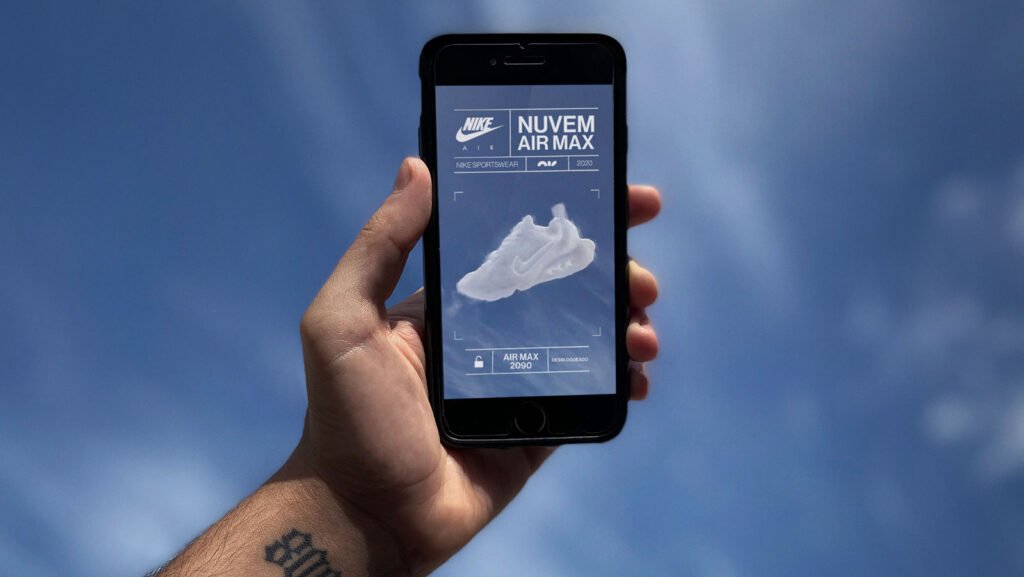How Nike Uses AR to Create Culturally Relevant E-Comm Opportunities
Nike Air Max Cloud Stores To launch Nike's latest kicks, AKQA São Paulo created an augmented-reality e-commerce experience that puts content in the clouds overhead. (Virtually speaking, of course.) There's no app required. Just visit this site on

Nike Air Max Cloud Stores
To launch Nike’s latest kicks, AKQA São Paulo created an augmented-reality e-commerce experience that puts content in the clouds overhead. (Virtually speaking, of course.)
There’s no app required. Just visit this site on your phone and follow the instructions. Point the handset at the sky to display special clouds on your screen—one’s shaped like an Air Max 2090, another resembles a classic Air Max 90. Clicking on these images unlocks music and interviews and from Brazilian artists such as Djonga and McSofia.
“When Nike decided they wanted to leverage artists who are helping to inspire the present, we thought to ourselves, ‘Why not create a cultural platform that is literally floating above our heads?’ ” AKQA associate creative director Christiano Vellutini tells Muse.
That led the team to the notion of “cloud storage,” and they decided that an airborne visualization was in order.
“We used augmented reality to translate that concept into a very simple and intuitive experience,” Vellutini says. “In the end, it’s just a really cool folder with some exclusive files inside.”
“Air Max Cloud” expands on AKQA’s “Air Max Graffiti Stores” from last year—a Grand Clio-winning out-of-home effort that saw street artists add the shoes to existing murals, allowing passersby to unlock media and make purchases.
“Both ideas placed Nike in a culturally relevant spot through relatively simple technologies,” Vellutini says. “The difference between them is that the ‘Graffiti Stores’ was based on a very local insight, considering São Paulo’s unique street art scene. The ‘Air Max Cloud’ focuses more on a global insight, considering the moment the world is living in and the tech concept of ‘cloud storage.'”
“Air Max Cloud” works only when you aim for the sky, so those self-isolating indoors can point their phones out the window to access the experience.
“When everyone is locked inside their homes do to the Covid pandemic, windows end up being one of the only forms of contact with the outside world,” Vellutini says. “People are talking to their neighbors, playing tunes and expressing themselves straight from their balconies. These actions end up being a needed break from confinement.”
What’s more, “everyone is dealing with boredom by constantly searching for new content without leaving their homes,” he says. “So, this project ended up delivering new and relevant content to users, and also encouraging them to go to their windows to have that break.”
Nike’s Graffiti Stores

The award-winning project saw São Paulo’s graffiti artists update their existing works with the new Nike Air Max range featuring frequent launches each week, across neighbourhoods. The actual Nike Air Max models were then exclusively available pre-sale by visiting the works using geolocation to purchase. As an extra reward, an animated film starring the graffiti character wearing the shoes was also made available.

The city’s governor had erased hundreds of street art pieces, which forced the project’s artists to simply update existing works. However, during the project, the governor was convicted for damaging cultural heritage, and with the court-backing of a reinvigorated legitimate license championing the artists, six iconic characters that were previously erased, were resurrected.
Nike Graffiti Stores proved a successful platform for the Air Max releases with all models sold out, and the murals forever embedded in São Paulo’s cultural heritage.
Via Muse by Clio and AKQA
 English
English






